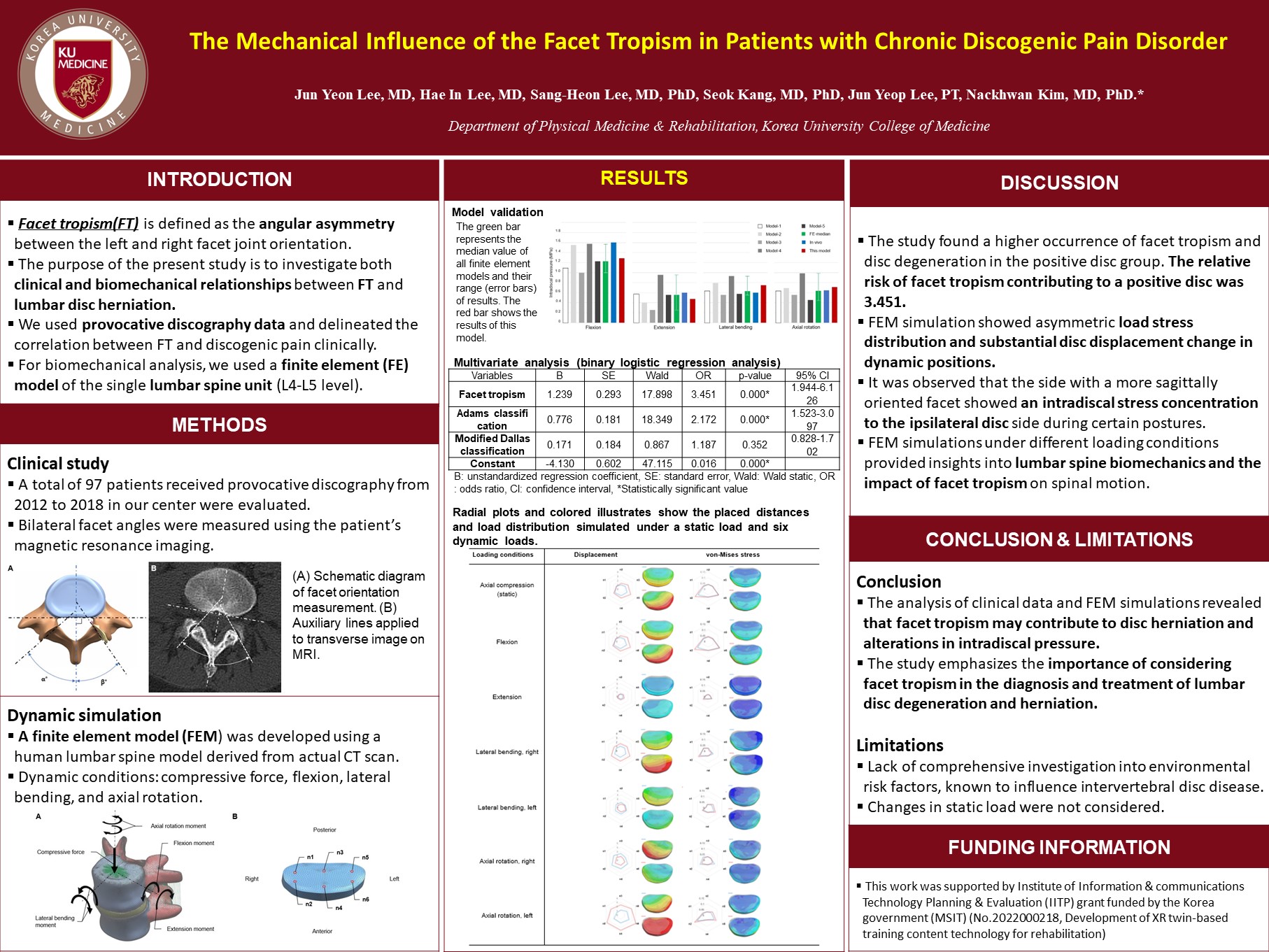
Synopsis
Our research delves into the biomechanical implications of facet tropism, a condition characterized by asymmetrical facet joint angles, in the development and progression of chronic discogenic pain disorder.
The study is divided into two main parts. The first part involves a retrospective analysis of clinical data from 156 patients who underwent provocation discography. Our findings revealed a significant association between facet tropism and positive discography results, suggesting a potential role of facet tropism in discogenic pain.
The second part of our study utilizes a Finite Element Method (FEM) simulation to further explore the biomechanical implications of facet tropism. The simulation demonstrated that facet tropism contributes to asymmetric load distribution and excessive disc displacement during dynamic positions, potentially leading to disc degeneration and associated pain.
Our research provides valuable insights into the role of facet tropism in lumbar disc degeneration and herniation. The findings underscore the importance of considering facet tropism in the diagnosis and treatment of lumbar disc degeneration and herniation.
Category
Pain Mechanisms
Secondary Category
Neuropathic Pain
Authors
| Jun Yeon Lee
Medical Resident Korea University Medical Center Seoul, Republic of Korea
Nakhwan Kim Professor of Rehabilitation Medicine Korea University Medical Center Seoul, Republic of Korea
Sang Heon Lee Professor of Rehabilitation Medicine Korea University Medical Center Seoul, Republic of Korea Email: spinelee@gmail.com |
Hae In Lee
Medical Doctor Korea University Medical Center Seoul, Republic of Korea
Jun Yeop Lee Clinical Researcher Korea University Guro Hospital Seoul, Republic of Korea |